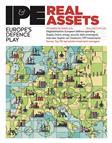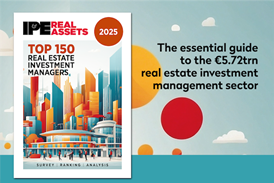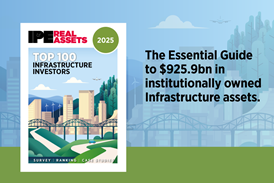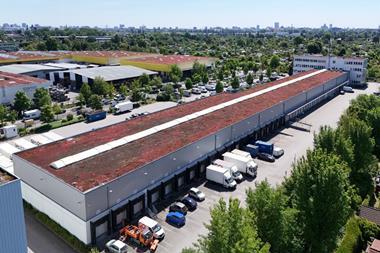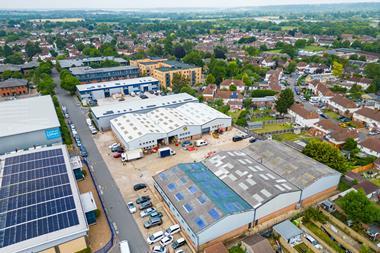Hesp rejoins INREV during a time of geopolitical and macroeconomic uncertainty, as real estate markets face valuation falls, poor returns and sluggish capital raising
It took just five months for European real estate investment association INREV to find its new chief executive after it was announced in March last year that Lonneke Löwik would step down after seven years in the role. In August 2024, INREV came up with a name that would be very familiar to its membership – Casper Hesp.
![Casper-Hesp-portrait[92791]](https://d15duu1h3gsd2d.cloudfront.net/Pictures/480xAny/2/7/8/1329278_casperhespportrait92791_984594_crop.jpg)
Hesp started the role in October, after spending a decade at Dutch fund manager Achmea Real Estate, where he was director of investment management. But before then he worked at INREV, between 2007 and 2014, most latterly as director of research and market information. After joining Achmea, he remained closely involved with INREV, including as chair of the association’s training and education committee.
At the time of his appointment, Martin Lemke, INREV’s chair, said: “Casper has a proven track record of success as a leader of change. His breadth of experience will be of significant benefit to INREV as we continue to help the European non-listed real estate industry adapt to the challenges and opportunities of the future.”
Hesp returns to INREV at a time of geopolitical and macroeconomic uncertainty, and towards the end of difficult period for real estate markets, characterised by valuation falls, poor returns and struggling capital raising and thin transaction volumes.
But the organisation’s membership – which principally comprises large institutional investors, such as pension funds, and real estate investment management firms – has been growing strongly. Over five years, it has risen 26%, so that it numbered 131 members at the beginning of the year.
And Hesp may be in a good position to maintain that trajectory. He is well versed in the workings of INREV – from the inside and from the outside as a member. But he has also learned much working for an investment manager, serving investors directly.
“Having spent more than 10 years as an investment manager, I was dealing with the restructuring of our funds, governance of our funds, fees, launching new funds and selling funds as well,” he says. “These are all topics that we are discussing within INREV, or describing in our research projects, or dealing with for professional standards. So I think I really understand our members, what they are dealing with.”
Hesp continues: “Even more important is that my years at Achmea made me realise how important INREV is for transparency and for the sector in general – because, in my years at Achmea, suddenly I was speaking with those institutional investors and then we were making choices based on the transparency of a sector. And if there wasn’t enough data from that sector, they weren’t going to invest.
“So I think the huge impact we can make as an industry organisation is to get as much performance data as possible and make sure that our investors receive that information so that they can make decisions based on real information.”
The production of reliable data to improve transparency about asset performance is therefore a major focus for Hesp today. “I am convinced that data transparency attracts more capital to the industry,” he says. “We want to improve all the information that we have already, so that we can reconcile fund level and asset level performance, which is very helpful for our members.”
INREV is collaborating with NCREIF in the US and ANREV in Asia to explore the possibility of creating a global asset-level index. Hesp says: “That will not be launched in 2025, but we’re looking into the possibilities to work together in the coming years.” This is of vital importance for commercial real estate in the wake of significant price corrections across all subsets of the asset class, he says.
Another critical issue is the ability to incorporate ESG capex into valuations. INREV recently launched an ESG valuations focus group to help evaluate how ESG goals impact underwriting inputs and expected returns. Hesp says the group will seek to drive greater consistency across the industry on how ESG data and assumptions are incorporated into future value estimations. The group comprises senior experts from across the industry, including institutional investors APG and PGGM, fund managers CBRE Investment Management and AXA IM Alts.
Hesp says the initiative is a direct response to growing demand from the industry for greater clarity on the impact of ESG in real estate underwriting. “Our ultimate aim is to move the industry beyond theoretical discussions to a more tangible, numbers-driven approach for ESG valuations. We need to get an understanding about how people are incorporating ESG risk into their valuations, their valuation processes and underwriting processes.”
Despite growing uncertainty about the future of sustainability, amid a so-called ‘ESG backlash’ in certain quarters, “ESG is still very high on the agenda,” says Hesp, citing its recent membership survey.
INREV is working “to see if we can link asset-level performance to ESG data, because it will be very nice if we can prove that ESG buildings also have the best financial performance”, Hesp says.
There is also the ongoing issue surrounding real estate and the EU’s Sustainable Finance Disclosure Regulation (SFDR) and its ‘Article 8’ and ‘Article 9’ classifications, which were not set up well to recognise the positive impact that sustainable retrofitting of poor-performing buildings can have.
Hesp says: “There are so many real estate funds working on the transition of existing stock, which needs to become green to align with the Paris Agreement and net-zero ambitions. But transition funds are automatically rated [Article 8] under SFDR rules. We are working with the European Commission to see if we can get them an Article 9 classification, as a lot of important work needs to be done in those funds.”
He adds: “If transition funds can get recognition within the SFDR, then it’s easier for institutional investors to invest in those funds.”
AI adoption, education and market uncertainty
INREV’s focus on data coincides with rapid advancements in artificial intelligence (AI) and the challenge this poses to the real estate industry. Hesp says: “We’ve launched a technology committee to understand the impact of AI, and we’re asking our members to provide case studies showing how they implement AI in their real estate business. And within INREV we are in the beginning phase of exploring how we can use AI within our own business.”
In April last year, INREV published a white paper on AI discussing how the technology can solve complex optimisation problems, streamline operations, improve decision-making processes and enhance customer experiences within organisations and at the asset level.
But it also warned that the complexity of incorporating AI into business processes means there is an urgent need for commercial real estate operators to establish robust governance processes and training for employees on ethical concerns and privacy issues to ensure the appropriate use of AI and to minimise risks of unfair or unreliable outcomes.
It ties into INREV’s long-running education programme, which today, Hesp says, is vital at a time of such uncertainty across the industry. “Education is part of our mission. We have around 25 training courses, and we have a mentorship programme for our young professionals as we are trying to attract as much young talent to the industry as possible.”
Investors are also having to grapple with how to respond to such uncertainty. “As an institutional investor, you have to almost accept that there will be more uncertainty in your investment portfolio. Real estate is still an attractive asset class, but I think one of the results of this is that there might be a bit more attention for core, less risky real estate.”
Hesp believes that residential real assets may prove to be something of a safe haven during this period of market turmoil. He says: “There’s a huge demand for residential properties all over Europe and, from a risk perspective, residential is less risky because of this. Affordable housing is very important, because if you look at it across Europe you see in almost every country there’s a lack of affordable housing. [This presents] a huge opportunity for institutional investors.
“I think everything around housing is interesting at the moment. In our investment-intention survey, residential was the most preferred sector and student housing the third-highest pick. And another area of interest in the living space is senior living, because of the demographics in Europe, with the average age getting higher.”
Hesp has also noticed an uptick in interest for logistics, driven by continuing growth in e-commerce. Perhaps ironically, he has also seen increased interest in retail property.
“After years of decreased interest in retail real estate, we saw, for the first tim a slight increase in interest from institutional investors, which might be a reflection of the huge revaluations we have seen in the last five years for that sector.”
To read the latest IPE Real Assets magazine click here.-


